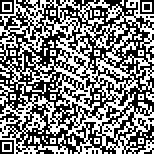| 摘要: |
| 目的 粮食生产功能区和重要农产品生产保护区(以下简称“两区”)划定是确保国家粮食安全和保障重要农产品有效供给的重要举措。文章调查“两区”内作物实际种植情况,探索遥感技术在“两区”作物种植结构监测和“两区”数据更新中的应用方法。方法 以黑龙江省富锦市为研究区,以Landsat8多光谱影像为数据源,采用遥感监测技术,对研究区范围内2020年水稻、玉米和大豆3种作物种植情况进行监测,识别3种作物并提取地块边界,形成作物空间分布矢量图,与“两区”划定成果图叠加对比,分析“两区”划定情况与实际种植情况的一致性。结果 (1)富锦市水稻生产功能区内水稻实际种植面积占比88.2%,玉米生产功能区内玉米实际种植面积比例为17.8%,大豆实际种植面积占大豆生产功能区的68.8%。(2)富锦市实际种植情况与“两区”划定成果要求种植面积存在明显差异,差异大小因作物不同而不同,主要受当地自然条件、国家政策和农民种植意愿的影响。结论 鉴于遥感技术可以在“两区”作物种植监测中发挥特殊作用,建议农业农村部门采用遥感技术对“两区”范围内作物种品种和种植面积等情况进行动态监测,及时掌握实际种植情况并更新“两区”数据库,实现精细化管理,进而为决策部门优化农业种植结构,保障国家粮食安全。 |
| 关键词: “两区” 种植结构 遥感 粮食安全 分类 |
| DOI:10.7621/cjarrp.1005-9121.20230917 |
| 分类号:P9 |
| 基金项目:国家重点研发计划“智慧农牧关键技术集成与中蒙协同创新示范园研究”(2021YFE0102000);农业农村部规划设计与研究院自主研发项目“3S技术支持下的自主可控精准农业体系研究”(ZZYFXKFZ201904) |
|
| CROP PLANTING STRUCTURE MONITORING IN "TWO-ZONE" USING REMOTE SENSING TECHNOLOGYTAKING FUJIN CITY, HEILONGJIANG PROVINCE AS AN EXAMPLE |
|
Xing Zefeng1, Jiao Weijie2, Wang Danqiong2, Zhao Chunmei2, Jia Shaorong2
|
|
1.Academy of Agricultural Planning and Engineering, Ministry of Agriculture and Rural Affairs, Beijing 100125, China;2.Big Data Development Center, Ministry of Agriculture and Rural Affairs, Beijing 100125, China
|
| Abstract: |
| The demarcation of the primary grain production zone and the protected production zone of major agricultural products (hereinafter referred to as "Two-Zone") is a necessary measure to make sure national food safety and ensure the effective supply of vital agricultural products. The purpose of this paper is to investigate the planting structure of crops in the "Two-Zone ", and to explore the application of remote sensing technology in the monitoring of the crop planting structure and the "Two-Zone" data update. This paper took Fujin city, Heilongjiang province as the study area and Landsat8 multispectral images as the data source. The remote sensing method was used to identify and extract the planting areas of rice, corn, and soybean in the study area in 2020. Then, it was superimposed and compared with the resulting map of the delineation of the "Two-Zone" to analyze the consistency between the demarcation of the "Two-Zone" and the actual crop planting structure. The results were listed as follows. The monitoring outcomes exhibited that the actual area of rice in the rice primary grain production zone of Fujin city accounted for 88.2%, the actual area of corn in the corn primary grain production zone was 17.8%, and the actual area of soybeans accounted for 68.8% of the soybean primary grain production zone. There was a significant difference between the actual crop planting structure in Fujin city and the required planting area of the "Two-Zone", and the difference varied with different crops. The main reason was that it was affected by local natural conditions, national policies, and farmers' willingness to plant. Since remote sensing technology performs a specific function in the monitoring of crop planting in the "Two-Zone", it is recommended that the Ministry of Agricultural and Rural Affairs use remote sensing technology to conduct dynamic monitoring of crop varieties and planting areas. Therefore, it is possible to grasp the actual crop planting structure in time and update the "Two-Zone" database to achieve refined management, thereby optimizing the agricultural planting structure for decision-making departments and ensuring national food security. |
| Key words: "Two-Zone" crop planting structure remote sensing food security classification |

